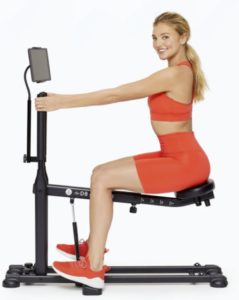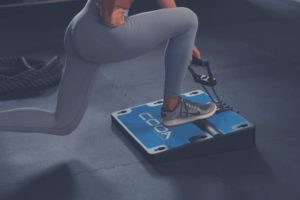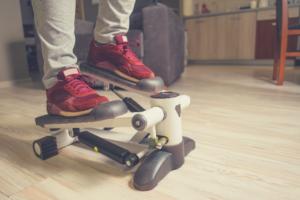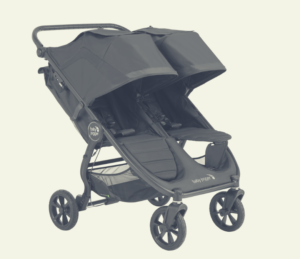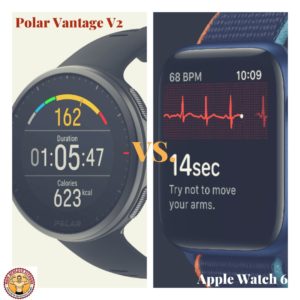Your glutes can be one of the most challenging parts of your body to train due to the sheer number of muscles in the area that make it hard to target them all and the specific exercises designed to develop them properly without a trainer.
However, today, many manufacturers have created glute training devices to help take the air of uncertainty out of activating your glutes, so you actually look forward to training them as part of your fitness regimen.
GLUTE TRAINER BUYING GUIDE
Table of Contents
Best Glute Training Device Brands
Benefits of Glute Training Devices
What Does This Product Do?
A quality glute product enables you to enhance your workouts at home by overloading your muscles, which is needed to see gains.
In other words, it allows you to feel some sort of resistance by adding extra tension to your moves via a toning tool to really target and challenge the muscles in your buttocks.
In fact, one certified strength and conditioning specialist states that, though it’s fairly easy to get your glutes burning performing a series of small moves, it takes more than that to get them firing during more complex exercises that target multiple muscles in the area, which is what is needed to really transform your butt.
This is where glute exercise equipment comes into play to help you engage more muscles and make your moves more challenging, so they are more effective at building mass and toning your butt how you want.
However, small, repetitive moves can still be used prior to your workout to help wake up the glutes and prepare them for more strenuous exercises.
Some glute training devices also include workout apps and online live stream classes taught by a certified instructor for more quality and fun workouts.
Who Should Use It?
Strong glutes provide many benefits throughout the body, including helping improve your posture, which helps reduce muscle tension and pain in the back and neck.
This, in turn, also helps you stand and sit taller, walk better, and lift heavy objects more easily.
It also helps stabilize the hips, which helps decrease the risk of injury to your groin, knees, and hamstrings.
Training your glutes also helps strengthen your hamstrings, quads, calves, and hip flexors, which helps you move and pivot faster, run harder, and jump stronger, which is needed to excel at sports.
Therefore, glute training devices are for anyone looking to enhance the look of their bum, those looking to strengthen their glutes and surrounding muscle stabilizers for improved support and mobility, and athletes looking to be more explosive in their event.
They are also a great alternative to work your glutes when you can’t get to the gym or to just simply save money on costly gym equipment and fees by working out at home.
How to Choose a Glute Training Device
What to Look for in a Glute Training Device
Sturdy Build and Balanced Design
To ensure a balanced and stable workout, your glute training equipment should be engineered to stay in place and withstand the most fierce moves.
Therefore, you need to look for one made of commercial-grade materials with a balanced design to ensure quality training.
A balanced design also helps ensure your body remains in the ideal position throughout your workouts, which helps minimize the use of your knees for better glute isolation and a more comfortable time.
If time or labor is an issue, you should look for one that is also easy to set up and store away when not in use.
A glute training machine with a light portable design will also enable you to take it with you while traveling and more.
Exercise Options
Your butt is made of three major muscles that help define and strengthen it, which include the gluteus minimus, gluteus medius, and gluteus maximus.
The gluteus minimus is the smallest of the three gluteal muscles, and it is located right below the gluteus medius muscle, which is the thick, wide tissue that spans the outer surface of the pelvis. And finally, the gluteus maximus makes up the surface of the buttocks.
Exercising the gluteus minimus mainly strengthens the abductors and stabilizes the hips, and the gluteus medius, which is also a hip stabilizer muscle, helps with the bending, extension, abduction, and lateral and medial twisting of the hip.
Meanwhile, the gluteus maximus is the thickest and largest muscle in the butt, which gives it its overall shape.
So as you see, each gluteus muscle on its own only makes up a portion of the shape of the butt; therefore, you will need to strengthen each one of them to get an overall toned and lifted butt.
Hence, you need to look for a glute training device that enables you to strength train the gluteus minimus, the gluteus medius, and the gluteus maximus to build a strong, more supportive rear end for sports and more.
Scientifically Proven/Certified Trainer Approved
Glute training devices that are scientifically proven to work helps ensure you receive an effective workout, so you don’t waste your money.
Likewise, certified personal trainer-approved devices also help ensure effective workouts and make it feel like you are doing glute exercises most recommended by a professional trainer.
What to Avoid in a Glute Training Device
To do standing glute exercises properly, you need a strong, stable surface, so you want to avoid cheaply made products that can wobble and topple while exercising, which can make it hard to get a good workout and cause you to fall.
You also want to avoid glute devices made with cheap resistance bands, which can break and wear easily as you stretch and pull them, also resulting in injury.
It also means you will have to replace the equipment sooner, which will add to your cost.
Top Rated Glute Training Device
The DB Method – Best for Squat Exercises
The DB Method is an all-in-one glute machine that reinvents the squat using patented technology that enables you to engage in shorter workouts with quick results.
It also activates the shoulders, arms, chest, legs, outer thighs, and core all in one move for a total body workout.
Users can also adjust their exercise resistance with up to 200 pounds of weight or more.
It’s also expertly designed to prevent unnecessary stress on the lower back and knees for a more joint-friendly workout.
Pros
- It’s especially good for working the glutes and pelvic muscles to help them function properly, but it also helps strengthen the rest of the muscles throughout the body for overall fitness.
- It’s designed to be comfortable during use.
- Its sleek frame looks nice when it’s upright, and it also folds down to easily store in the closet or under the bed when not in use.
- It also includes a free app designed by elite trainers to get daily guidance on reaching your goals.
- Users can also purchase additional accessories separately to enhance their workout.
Cons
- It’s mainly designed for squats, which means you don’t benefit as much from added glute training variety.

bootylux Booty Lifter – Best for Band Hip Thrusts
The bootylux Booty Lifter allows you to work your glutes for improved butt strength, pelvis strength, and lower body strength, which helps improve the overall stabilization of your body for better balance and sports performance.
The 25 x 28x 7″ hip thruster unit, which is made out of high-quality powder-coated steel with a wooden foot resting board and durable foam backrest, is also easy to use and includes resistance bands for maximum total body performance.
It’s also foldable for easy transport and storage under your bed, couch, and more.
The company also offers a full refund replacement if you are not satisfied.
Pros:
- The hip thrust motion makes it ideal for runners, dancers, gymnasts, spin enthusiasts, and other athletes that require a strong lower body, balance, and power.
- It also includes 2 premium 45-pound resistance bands wrapped in a neoprene sleeve for comfortable support during use.
- It’s suitable for all fitness levels and promotes a nicely lifted and more rounded butt with regular use.
- The frame is lightweight and foldable for easy storage.
- It takes just one 10 to 15 minute session a day to start seeing results.
Cons:
- It’s designed mainly for hip thrusts, which means you miss out on the added variety of other glute exercises.
Glute-Tastic Ankle Kickback Strap – Best for Glute Band Exercises
The Glute-Tastic – Ankle Kickback Strap help you build a stronger, rounder rear end via its portable and lightweight rubber latex set of ankle resistance bands with cuffs that better target your primary muscles during glute and hip exercises.
In fact, the 3 band set offers 3 levels of resistance, from 4 to 20 pounds, and a versatile range of motion to build your glutes and lower legs. They can also be doubled to create more weight.
The ankle straps also feature a comfortable design and reinforced details to support even the most intense workouts.
And they can be used for ground workouts or anchored to any door for an added challenge.
Pros
- The compact set of natural rubber resistance bands can be used anywhere, including while traveling and more.
- They also have a Velcro attachment with double stitching and reinforced steel double D rings to reduce stress, wear and tear on the bands.
- The ankle cuffs can also be used on cable machine at the gym.
- It also comes with a nylon carrying bag.
- The company also offers a satisfaction guarantee that the equipment is designed to the highest quality standards.
Cons:
- It doesn’t include a sturdy platform for more stability.
Valor Fitness CB-29 Adjustable Glute and Ham Developer – Best For a Home Gym
Valor Fitness CB-29 Adjustable Glute and Ham Developer is a 2″ x 2″ solid steel machine that enables you to perform GHD sit-ups, hip extensions, back extensions, and more.
It also adjusts in 6 positions horizontally and 4 positions vertically for added convenience, and there are also 2 band pegs to add extra resistance.
It also has padded ankle rollers and a steel footplate to allow for a secure fit while doing sit-ups and back extensions, 2 4.75″ long grip handles on each side for added assistance, and a 2″ thick knee platform that supports your knees while kneeling.
You can also store plates on the plate storage bar on the back of the unit if you’d like.
Pros:
- It is a heavy-duty ab machine with Olympic plate storage that also enables you to work your glutes, hamstrings, hips, and back.
- It also includes high-density padding to withstand stress while working out.
- It includes angled support bars to prevent it from moving and shaking while using it, and the base also has rubber stoppers to protect the flooring.
- It’s 85 x 30 x 44″ black, alloy steel frame fits nicely in just about any space.
- It also includes a 3-year warranty on the frame, a 2-year warranty on the pad, and a 1-year warranty on the popper pins.
Cons
- It’s a bit bulky, so it takes up more space, and it also costs more.
CoBa Glute Trainer – Best Overall
The CoBa Glute Trainer is a resistance band workout system that enables you to work your glutes, core, and more for a full-body workout that completely transforms your overall physique.
In fact, users can perform over 7 of the most popular glute exercises utilized at the gym using several different machines but on just one device.
It also has a unique counterbalance design that includes a 7% incline to keep your body perfectly positioned for increased glute muscle activation.
This biomechanical position also helps prevent you from relying on your quadriceps and knees to do the work for a more effective workout.
It’s also scientifically proven to improve glute activation faster and safer than other squat machines, and it’s also certified by personal trainers and physical therapists for muscle recovery and relieving pain in the lower back and knees.
The Coba Glute Trainer is also one of the only products of its type on the market that works all three muscles of the butt, which include the gluteus medius, gluteus maximus, and gluteus minimus.
Pros
- It is commercial-grade and convenient to use.
- Users can perform up to 8 gym-quality glute workouts in one device.
- Its inclined design is safe on the back and knees to help prevent injury and make your moves more effective.
- It weighs just 12 pounds, so it is easy to set up and store away.
- It’s scientifically proven to work and backed by certified personal trainers.
- It also includes a free training app with a myriad of exercise options and movements to choose from.
Cons:
- It’s small and portable enough for travel but may take up a lot of space.
> >Related: Read Our Full Review of the Coba Glute Trainer Here < <
Common Questions About Glute Training Devices
What Are the Different Types of At-Home Glute Devices?
There are many different types of at-home glute devices, such as standing glute devices, squat machines, glute hamstring developer (GHD) devices, hyperextension Roman chairs, glute benches, hip thrust devices, glute resistance band systems, and more.
And they all enable you to perform a variety of glute exercises to strengthen your gluteus maximums, gluteus medius, gluteus minimus, a combination of the muscles, or all three of the muscles, which will ultimately determine the best device for you.
Some are also easier on knees, such as upright rowing machines and inclined glute platform systems, so you may also consider these types of glute machines if you have knee issues or just want to avoid injury altogether.
Depending on the machine, it may also help strengthen the muscles in your legs, back, abs, and more, in addition to your glutes, for a fuller workout routine, so you should also keep this in mind when choosing a machine.
And some also enable you to add weights for more resistance and bigger gains, so if you are looking to lift over 200 pounds, then you may look for a glute machine that also enables you to add weights for some serious glute training.
That said, some of the most popular at-home glute training devices include:
Standing Glute Machines
Some of the most common types of at-home glute training devices are standing glute products, such as the CoBa Glute Trainer, which you use simply by standing onto the platform, grabbing the bands for added resistance, and then completing a series of traditional glute exercises, such traditional deadlifts.
You can also kneel on the platform to perform a series of floor glute exercises, such as donkey kicks, kickbacks, and more, also using the bands for added resistance and extended range of motion.
By repositioning the cords, you can also use the platform to do banded hip thrusts similarly to barbell thrusts to really target the glutes, hamstrings, core, and quads for a truly all-in-one glute device.
Glute and Ham Developers
Glute and Ham Developers not only enable you to work your glutes, but they also help develop all three heads in the hamstrings for stronger back legs, which is needed in sports for increased turning speeds and sprints, and more.
Otherwise, simply strengthening the front of the legs creates an imbalance between the front and back of the thighs, which puts excessive strain on the hip and knee joints, thus leading to athletic injuries.
Each time you do a back raise, it also causes the gluteus minimus, gluteus medius, and the gluteus minimus to engage, thus helping build more muscle and strength in the area.
Ankle Kickback With Resistance Band Systems for Butt and Hip Exercises
An Ankle Kickback With Resistance Band System for Butt and Hip Exercises is simply another device that enables you to perform a series of standing glute exercises but without a dedicated platform to kneel or stand on.
Instead, you kneel or stand on any flat surface, and then, with one end of the band anchored to a sturdy object, such as a door, and the other end with the ankle strap attached to your ankle, perform a series of glute kickbacks and other exercises to help strengthen your glutes, legs, hips, and calves.
And since they only contain a set of ankle bands, they are portable enough to take with you wherever you go, including the office, to the park, on vacation, and more.
Squat Machine Home Gyms
Squat machine home gyms mimic the move of traditional squats but with the guidance of the equipment to help you perform the perfect squat each rep, thus resulting in a greater mind and body connection and maximum results.
They are also less weight-bearing on the knees than traditional squats due to their added support, which also includes handrails that help keep the weight shifted into the hips for heavier glute loading.
It also includes footrails that prevent your body’s natural tendency to fall forward, thus throwing the posterior chain of muscles out of whack, which can not only lead to underdeveloped glutes but also injuries.
How Much Do Glute Machines Cost?
Glute training devices and machines range in price, depending on several factors, including their features, such as if it includes a display for tracking your stats and more or not.
The size of your glute training device will also usually dictate its cost.
For instance, a large, bulky gym-sized glute training machine will cost significantly more than a portable one while also taking up more space in your home.
So for a smaller, more portable model that also fits nicely in your home, consider going with one of our suggestions.
They also only range in cost from about $35 to $600 for a more affordable but scientifically proven effective option.
What is the Best Way to Use a Glute Training Device?
The best to use a glute training device depends on your specific device and whether you are doing standing or kneeling glute exercises, etc.
However, when doing squats, which is one of the most common exercises done using a glute training device, begin, by standing with your feet about shoulder-width apart and your toes slightly turned out.
Hold the resistance bar on your shoulders behind your neck.
Take a deep breath, then push your hips back while slowly bending your knees.
Once your thighs are even with the floor, slowly begin to stand back up with your core embraced to keep your back straight and your feet pressed into the ground until you are back in the starting position.
On an inclined glute board, simply place your feet on the bar with the weight loaded into your heels and then squat to grab hold of the handle, and then continue the move with added resistance from the band.
When doing banded hip thrusts, place the lower part of your shoulder blades against the elevated surface with the band around your thighs, your knees bent, and your feet about shoulder-width apart on the ground.
Then, with your chin tucked in, slowly lift your glutes by pushing through your heels until your legs form a 90-degree angle with the floor. Hold the position with your glutes contracted, then slowly lower back to the starting position.
To use a standing kickback glute device, attach the machine’s cable to your ankle using the ankle strap.
Then, facing the machine, take a few steps back and stand with your feet shoulder-width apart. Grip the machine with both hands. You should be leaning slightly forward.
With your core engaged, raise the leg attached to the machine directly behind you with your standing leg planted on the floor.
Squeeze your glutes at the top of the move, then slowly lower your leg to the starting position. After completing your desired number of reps, switch to the other leg.
In the end, no matter which exercises or device you use to strengthen glutes, experts stress that it is important to keep your back straight to avoid injuring the spine and causing back pain.
They stress that it is also important not to let your knees go past your toes when doing lunges, squats, deadlifts, etc. because it strains the joints, which can cause pain.
You should also avoid jolting your knees on the up moves because it causes jarring of the joints, which can also cause injury.
Likewise, using an excessive weight load when doing glute exercises also puts stress on the knees, so keep your resistance at a minimum to help protect your knees.
Meanwhile, if you have an existing injury, you are recovering from surgery, you experience back or knee pain, or you are pregnant, you should talk to your doctor before using any glute training device to be sure it is safe for you.
How Often Should You Use a Glute Training Device?
How often you should use a glute training device depends on how experienced you are at training your glutes and what moves you do.
But according to one certified personal trainer, just two to three days a week is sufficient, provided you take at least one rest day in between your training days to allow your glute muscles to recover and relax, which is important to help them properly transform.
It is also recommended that you round out your glute resistance training with two to three other glute specific exercises just to be sure you’re really activating your muscles because sometimes it may feel like you’re working your butt, but in reality, you’re actually working other major muscles in the area instead.
This way, it ensures you’re not only getting a well-rounded glute workout but that you are also actually targeting your glutes.
In fact, it is a good idea to begin your glute training with a few basic butt exercises to wake up the glutes and ensure they are firing before moving onto more complex moves using the device for more effective workouts.
You can also do your glute training exercises on the same day as your other workouts for full-body training as long as you don’t perform them on consecutive days.
How Soon Should I See Results With a Glute Machine?
It takes up to 8 weeks to experience moderate muscle growth; therefore, this is how long it will take to see significant results with your training.
However, provided you are consistent with your workouts, it is not uncommon to see some results in as little as 4 to 6 weeks, with significant improvement seen after 6 months to a year.
If, however, after 4 to 8 weeks of glute training, you are still not seeing results, experts suggest it may be due to improper form.
So review your form to be sure your heels are planted firmly on the ground, your knees aren’t extending over your toes during your squats and lunges, etc., and your back isn’t curving during your moves, which can prevent you from seeing results and also puts you at risk of injury.
It is also important to ensure you are consuming the proper diet during this time, which can also prevent you from seeing results with your workouts.

